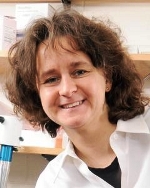
Francesca Storici
Georgia Institute of Technology, USA
Title: Mechanisms of RNA-guided DNA repair and modification
Biography
Biography: Francesca Storici
Abstract
We recently discovered that RNA serves as template to repair DNA double-strand breaks (DSBs), either indirectly, in the form of complementary DNA (cDNA), or directly, in the form of transcript-RNA in budding yeast. By removing the function of ribonucleases (RNases) H1 and H2, which cleave RNA in RNA-DNA hybrids, we found that transfer of genetic information from RNA to DNA occurs with an endogenous generic transcript in cis, and is thus a more common mechanism than previously anticipated.
DSB repair by RNA requires the recombination protein Rad52 but not Rad51, or Rad59. Upon overexpression of yRad52, yeast or human Rad52 N-terminal domain (NTD), the frequency of DSB repair by RNA increased up to of a factor of 68. These results indicate that human Rad52 could potentially catalyze DSB repair by RNA also in human cells. Moreover, in the absence of SAE2 or EXO1 genes, which are important for DNA end resection, the frequency of DSB repair by RNA was either increased or not changed, respectively. DSB repair by RNA occurs in the absence of a bona fide reverse transcriptase (RT) enzyme. Nevertheless, overexpression of RT stimulates DSB repair by RNA. These results support an RNA-dependent mechanism of DSB repair mediated by Rad52 that catalyzes a reaction in which RNA invades a broken double stranded DNA in conditions of limited end resection (Figure 1). While, the recombination protein Rad52 is a key factor for RNA-templated DNA repair of DSBs, RNA can modify DNA even without the induction of a DSB in a Rad52-independent manner. Our results suggest that transcript RNA, like non-coding RNA, may have a significant role in genome stability and genome modification, much more prominent than previously anticipated.
We acknowledge support from NIH GM115927, NSF-MCB-1615335, and HHMI grant 55108574 to F.S.
